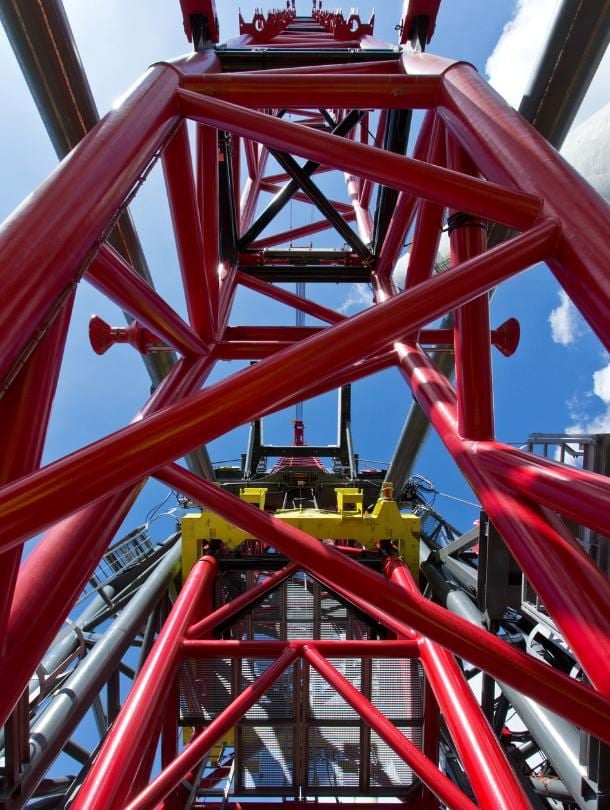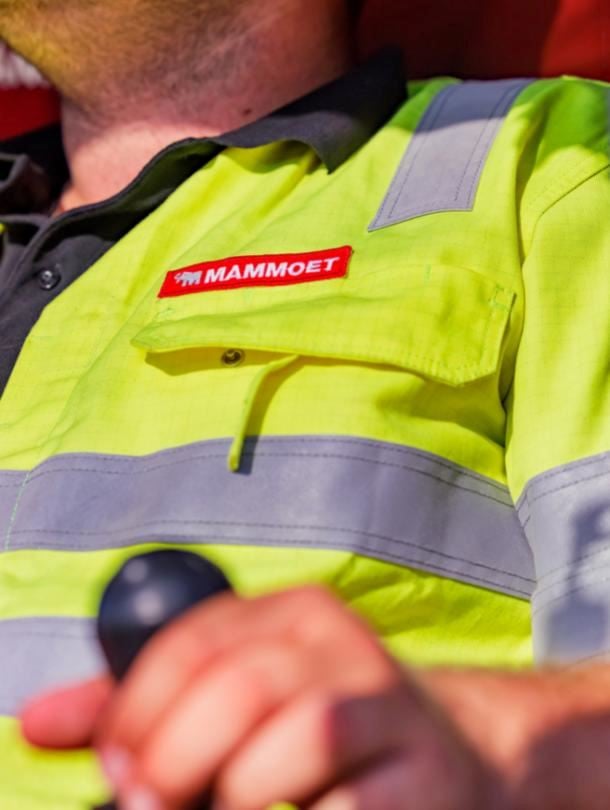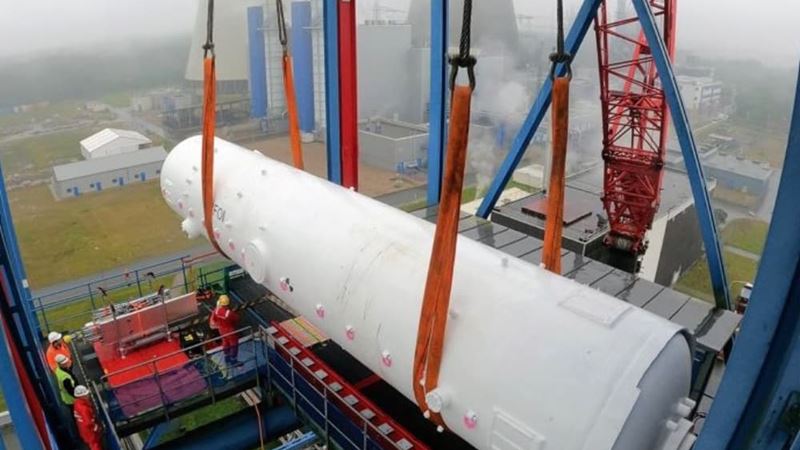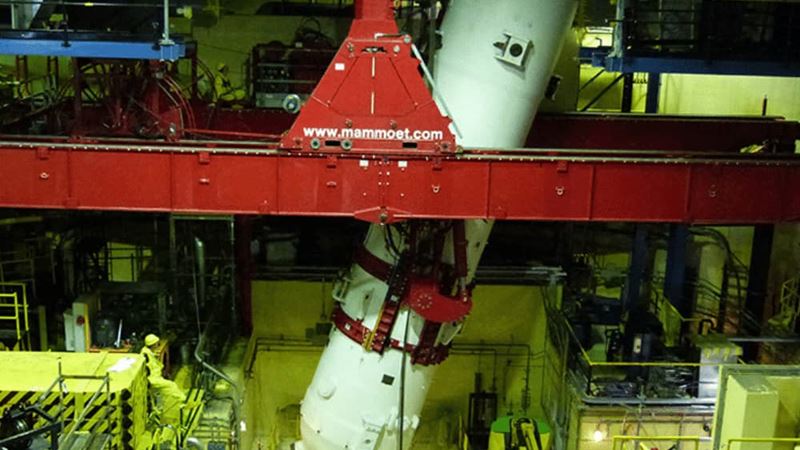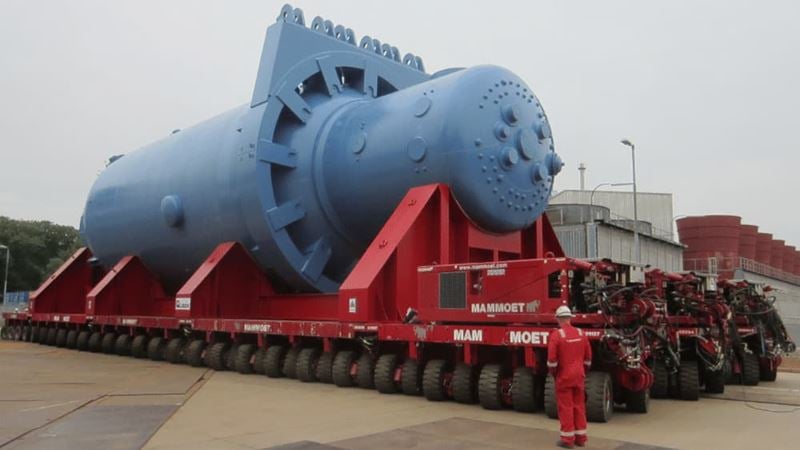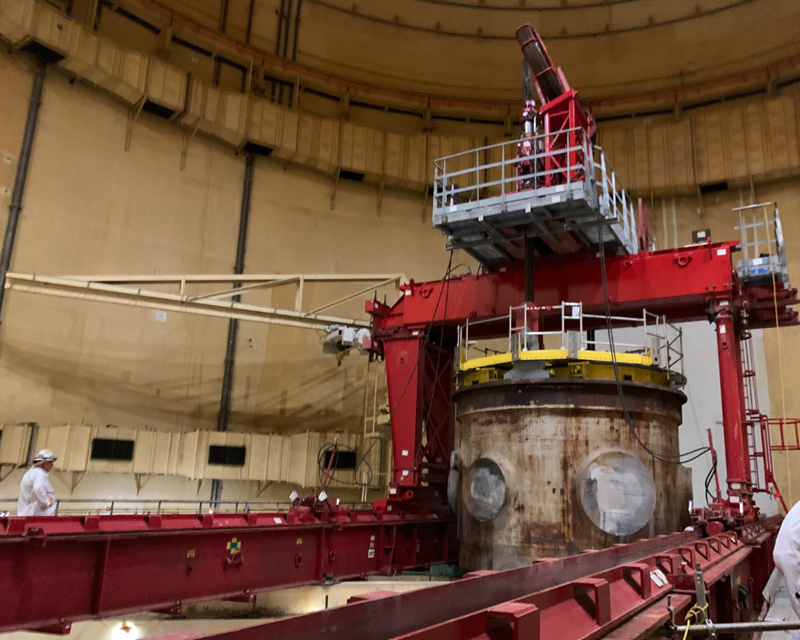
Sector:
Case study
Nuclear Power
Expertise:
Gantry lifting
Benefits:
Reduced disruption
Simplified management
Optimized schedule
Location:
United States
Florida
Mammoet performs industry-first lifts during ‘optimized segmentation’ of shutdown nuclear reactor
Mammoet crews assisted client Orano USA with the extraction of the sectioned 540-tonne nuclear reactor vessel (RV) at the shutdown Crystal River Unit 3 pressurized water reactor site in Florida. The removal of the RV is part of the accelerated decommissioning of the facility, which began generating electricity in 1977.
Typically, during decommissioning, all parts of a nuclear reactor are segmented, packaged, and shipped in up to 80 transports, which is time- and cost-intensive with repeated processes and regulatory requirements.
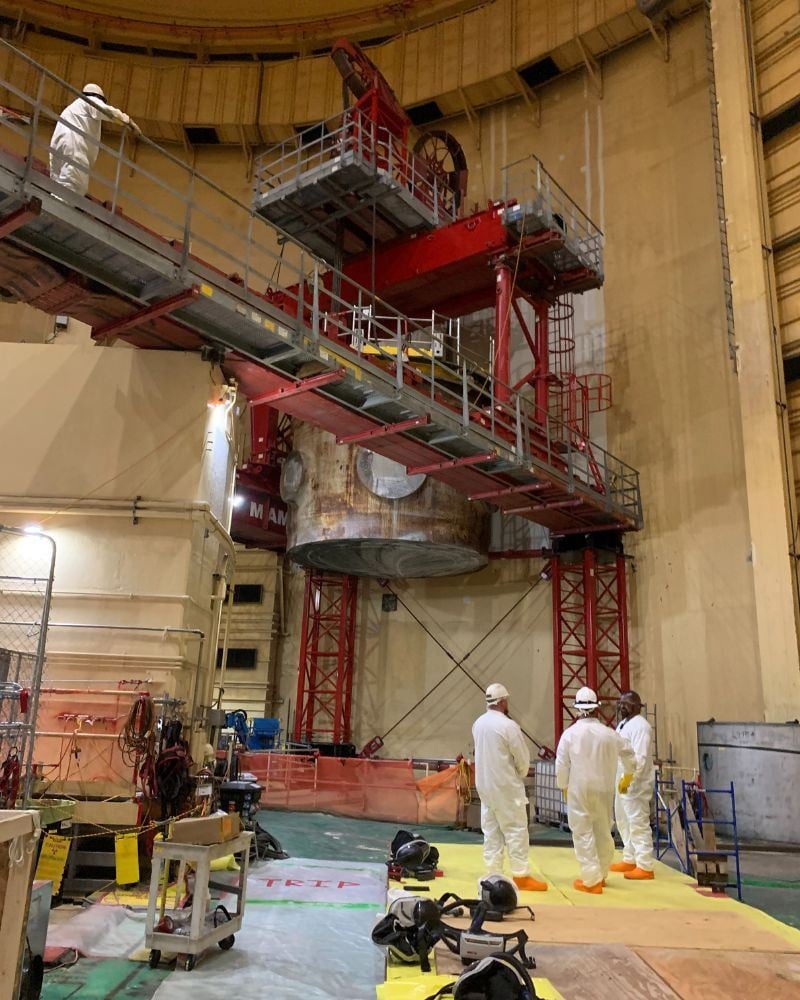
Orano developed and patented a process known as ‘optimized segmentation’, which first segments, extracts and separates underwater the reactor vessel’s internal components, the “internals”, into categories based on their radioactivity using the U.S. Nuclear Regulatory Commission's low-level waste classification system: A, B, C, Greater-than-Class-C (GTCC).
The A, B, and C internals waste was precisely repacked inside the emptied vertical reactor vessel to optimize the segmentation of the entire RV into three pieces for transportation and disposal. Using a custom-installed strand jack system spanning the inside of the reactor containment building, Mammoet’s crew carefully lifted the two heaviest RV segments out of the reactor well and then lowered each one down through the reactor building into a customized package on the ground level for transport to final disposal.
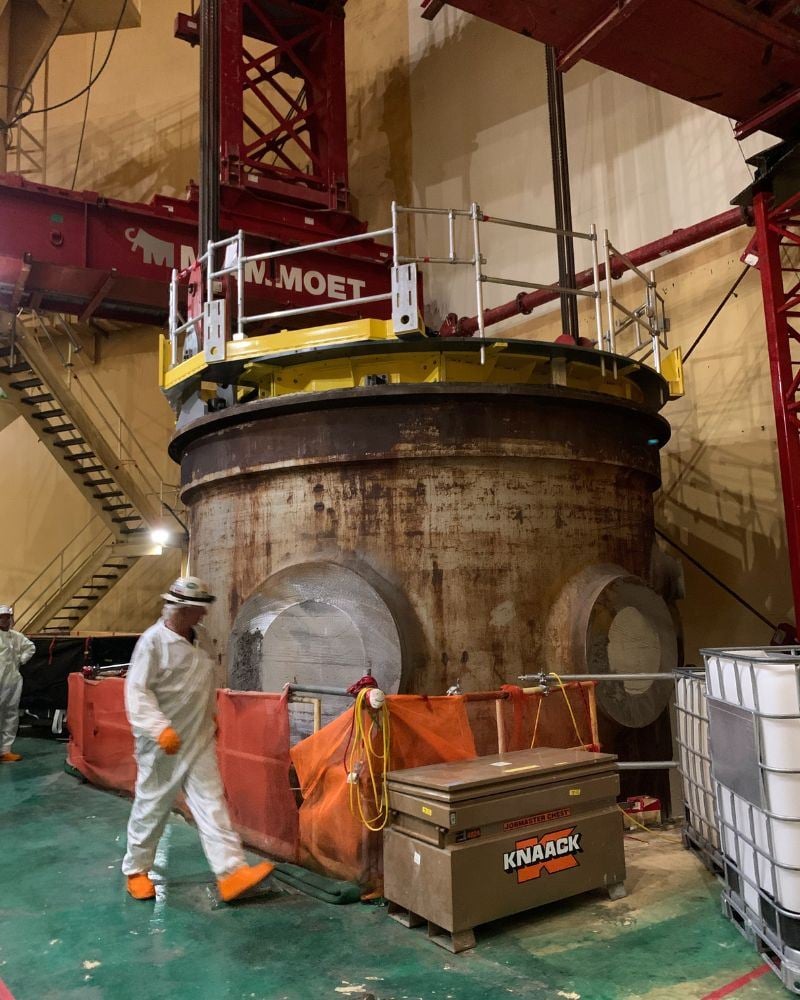
Mammoet’s team had prior knowledge of the facility after previously completing a steam generator replacement at the same location. This knowledge, combined with early involvement with Orano to plan the process and provide a workable solution for handling the reactor parts, was crucial to execution using the optimized segmentation method. This project marks the first time that this method was performed.
Altogether, Mammoet completed the reactor vessel removal with a quicker, more cost-effective, and more efficient solution using the strand jacks’ greater lifting power and minimal required space to position the equipment inside an already congested containment area.
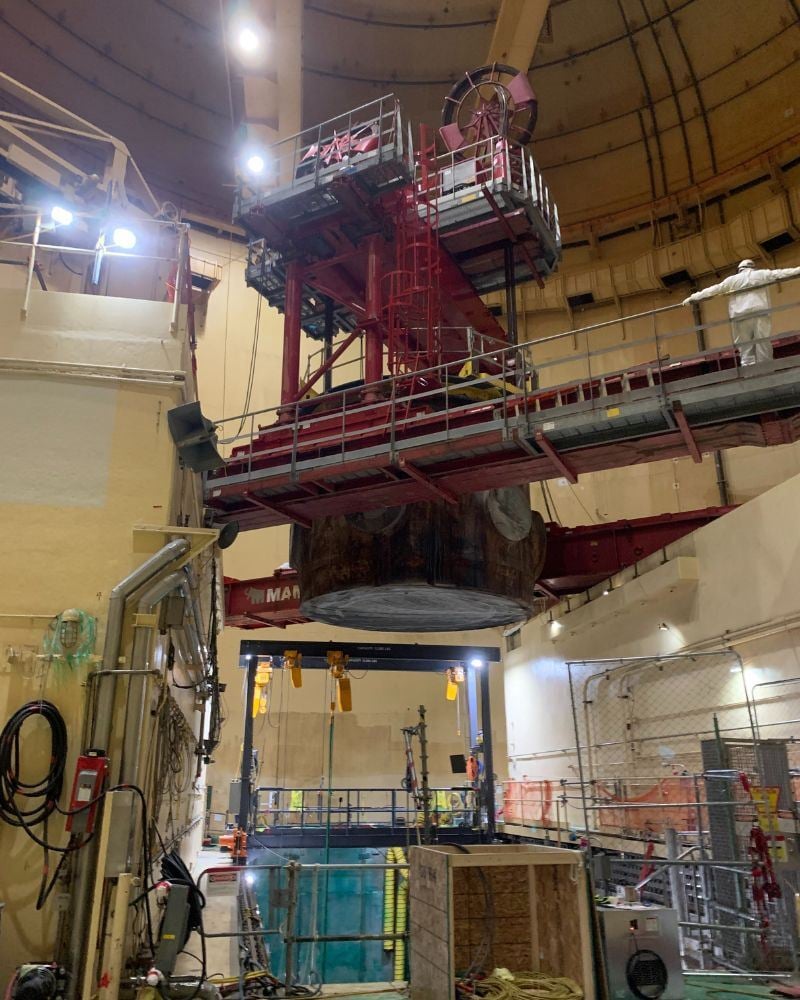
Mammoet Project Manager, Sidney King, stated, “Mammoet put together an expert team with decades of nuclear experience to assemble and operate the TLD/HTS strand jack system for our client. Execution of the lifts were performed flawlessly, and it is exciting to see the experience, technical expertise, and Mammoet’s innovative thinking come together to be a part of this historic moment in nuclear decommissioning.”
Mammoet has been closely involved in the nuclear industry since the early 1970s by providing heavy lifting and transport services to various nuclear plants across the globe. One of the more notable feats achieved by Mammoet’s team is demonstrated by the 2016 successful operation to safely enclose the damaged Chernobyl reactor.
